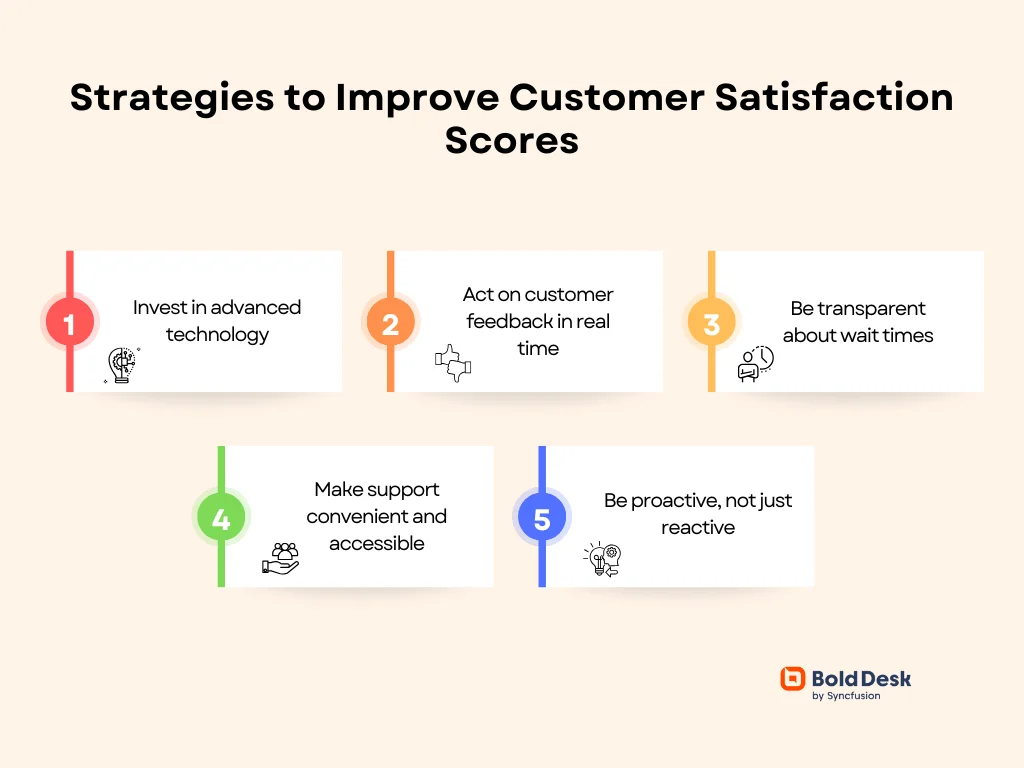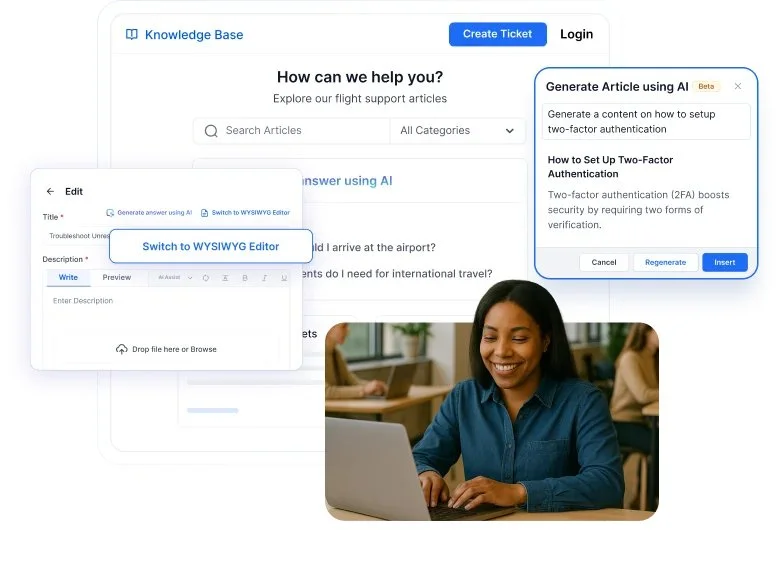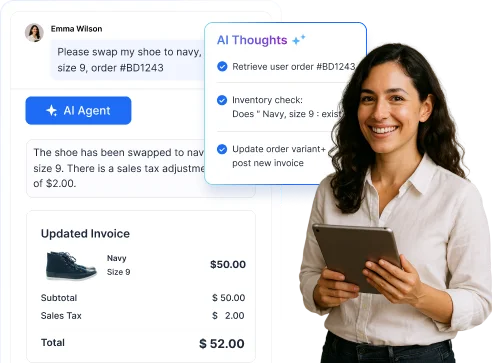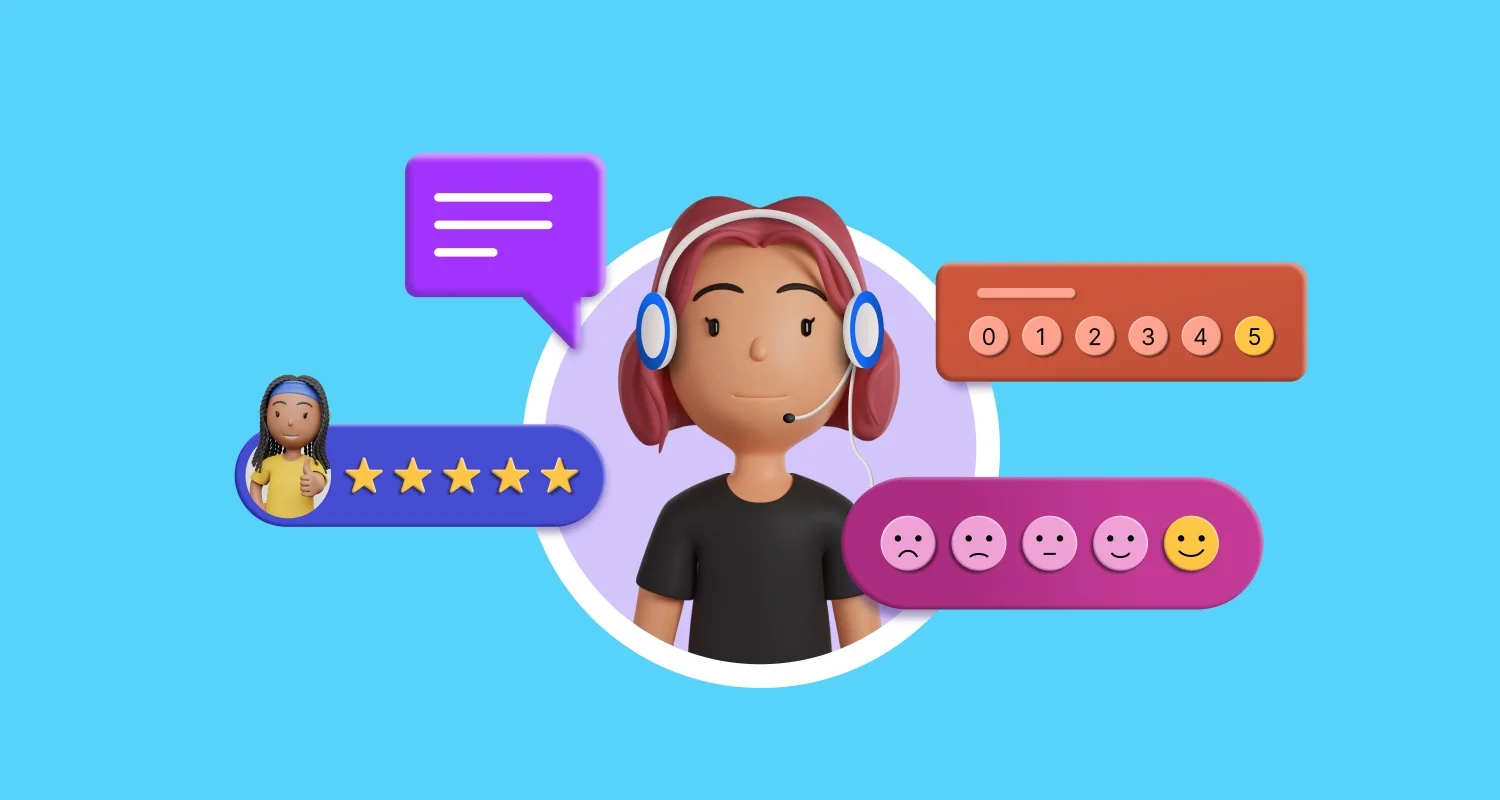Every business wants happy customers, but how do you tell if your customers are truly satisfied?
With customer experience now a significant competitive edge, it’s no surprise that 89% of companies compete primarily on customer experience, as reported by Zippia.
To stay ahead, businesses must measure and understand customer sentiment effectively.
The customer satisfaction score is a simple yet powerful customer service KPI that provides direct insight into how customers feel about your products, services, or support interactions.
By analyzing CSAT metrics and conducting customer feedback analysis, businesses evaluate customer satisfaction levels at key touchpoints and uncover opportunities to improve overall service quality.
In this blog, we’ll explore what a CSAT score is, how to calculate it, and how to improve your CSAT score effectively.
What is a customer satisfaction score?
A customer satisfaction score (CSAT) is a customer experience metric used by businesses to measure how satisfied customers are with their products or services.
It reflects the level of contentment customers feel after engaging with your brand, whether through a support ticket, purchase, or any touchpoint in their customer journey.
Unlike broader metrics like net promoter score, which assesses the long-term customer loyalty, CSAT focuses on short-term feedback, making it ideal for tracking performance in real time.
How do you calculate CSAT score?
To get started, you’ll need to collect feedback through a customer satisfaction survey, sent after a customer interaction. The survey usually asks a question like:
“How satisfied were you with your experience?”
Customers respond using a scale (e.g., 1 to 5 or 1 to 10), where higher numbers indicate greater user satisfaction.
CSAT calculation formula
Once survey responses are collected, you can calculate your CSAT score using this formula:

Positive survey feedback is typically rated 4 or 5 on a 5-point scale.
For example, if 80 out of 100 customers gave a rating of 4 or 5, your CSAT score would be:
(80 ÷ 100) × 100 = 80%
While CSAT can be calculated manually using the formula above, BoldDesk’s free CSAT calculator offers a convenient and automated alternative that simplifies the process for busy support teams or large enterprises.
When should you measure CSAT?
To get the most accurate and actionable insights, it’s essential to send post-interaction surveys at key moments in the customer journey. They include:
- After a support interaction: Understand how customers feel about the quality of help they receive from your team.
- After multiple interactions: Track how satisfaction evolves over time and identify patterns in customer experience.
- After six months or longer: Assess long-term user satisfaction and gather valuable customer feedback to improve retention rate and loyalty.
What is a good CSAT score?
A good customer satisfaction score (CSAT) can vary depending on your industry, customer expectations, and the nature of your products or services.
While many businesses strive for high scores, there’s no universal benchmark that applies to every organization.
Typically, a CSAT score between 75% and 85% is generally considered excellent.
It suggests that most of your customers are satisfied with their experience and that your support or service efforts meet expectations.
However, to truly understand how your CSAT score performs, analyze CSAT metrics against industry benchmarks, customer feedback, and your service environment.
How can you improve your customer satisfaction score
According to Salesforce research, 80% of customers now consider the experience a company provides to be as important as its products and services.
This means boosting your CSAT score goes beyond resolving issues; it’s about delivering meaningful, memorable experiences that make customers feel valued and supported.
Here are practical ways to improve your customer satisfaction score:

Invest in advanced technology
Customer expectations demand modern solutions, and businesses must embrace modern tools that streamline support and deliver faster, more personalized service.
To stay ahead of the curve and deliver more innovative support experiences:
- Leverage AI Copilot and an AI Agent to instantly handle common queries, freeing up human agents for more complex issues.
- Implement an automated help desk ticketing system to connect customers with the most qualified agents faster.
Act on customer feedback in real time
Real-time feedback collection ensures that insights are fresh, actionable, and tied directly to specific touchpoints. Acting on it quickly is what drives real improvement.
You can use the voice of the customer wisely by:
- Leveraging dedicated CSAT survey tools to automate feedback collection, analyze responses efficiently, and track satisfaction trends over time.
- Creating a customer feedback loop where customers see their input led to meaningful changes.
- Sharing customer insights across departments to align product, marketing, and support strategies.
Be transparent about wait times
Customers are more patient when they know what to expect. Setting clear expectations around wait times can reduce frustration even if the wait is longer than ideal.
Here are a few ways to manage expectations and reduce tension among angry customers during delays:
- Display estimated wait times in live chat or phone queues.
- Offer callback options to reduce perceived wait time.
- Send proactive updates if the resolution is delayed.
Make support convenient and accessible
The easier it is to get help, the more likely customers are to rate their experience positively. Customers should be able to reach you easily, on their terms.
Simplifying the customer service experience can be achieved by:
- Adopting an omnichannel customer service strategy to unify communication across platforms.
- Providing self-service options like FAQs and knowledge bases.
- Ensuring 24/7 customer service through automation or global support teams.

Be proactive, not just reactive
Don’t wait for problems to arise, anticipate them and offer help before customers ask. You can:
- Use customer sentiment analysis tools to detect dissatisfaction and intervene proactively.
- Send proactive messages, guides, or tips when users encounter challenges.
- Offer onboarding assistance, feature highlights, or renewal reminders at the right time.
What is customer satisfaction index?
The customer satisfaction index is a comprehensive metric that reflects how customers perceive various aspects of a business by combining individual scores from multiple business attributes, such as product quality, pricing, and customer service, into a single indicator.
How is CSI calculated?
To calculate CSI, use the following formula:

Unlike the customer satisfaction score (CSAT), which measures user satisfaction with a specific interaction or attribute, CSI provides a broader view of how customers perceive your brand across various touchpoints.
For example, let’s say a company evaluates three key areas: customer service: 60%, brand quality: 70%, and pricing: 40%.
The CSI score would be:
(60 + 70 + 40) ÷ 3 = 56.67%
Use customer satisfaction scores to elevate your support experience
Tracking your CSAT score provides valuable insights that drive meaningful progress and help establish a strong feedback loop, connecting customer input with actionable improvements across your support and service teams.
By conducting customer feedback analysis and aligning it with customer expectations, you can enhance support quality and drive long-term business growth.
Consider using BoldDesk to streamline this process. It offers built-in CSAT survey tools that support real-time feedback collection, helping you monitor satisfaction metrics and uncover actionable insights to improve customer experience.
If you have any questions, feel free to contact our support team. Don’t forget to leave a comment below with your suggestions or tips on how to improve CSAT scores.
Related articles
- 10 Key Customer Satisfaction Metrics to Measure in 2025
- 40+ Popular Customer Satisfaction Survey Questions
- Top 7 Benefits of Using BoldDesk CSAT Surveys
Frequently Asked Questions
Customer satisfaction score (CSAT) measures short-term satisfaction metrics with a specific interaction, product, or service. It’s typically collected immediately after a customer interaction, such as support ticket resolution or purchase.
NPS, on the other hand, evaluates long-term customer loyalty by asking how likely a customer is to recommend your brand to others.
It provides insight into overall brand perception and future retention rate.
The best time to send post-interaction surveys is immediately after a customer interaction, such as a support ticket resolution, product purchase, or onboarding session, making it easier for them to provide honest and relevant responses.
This also helps you quickly identify areas for improvement and take action before issues escalate.
Once you collect customer satisfaction score (CSAT) data, use it to identify service gaps, improve support processes, and enhance customer experience.
Analyze trends, act on negative feedback, share insights across teams, and recognize top-performing agents to drive continuous improvement.
Yes. Low satisfaction scores often signal unresolved issues, poor service experiences, or unmet expectations, all of which are common precursors to churn.
By identifying patterns in declining CSAT scores, businesses can proactively address customer concerns before they decide to leave.
However, CSAT alone may not provide the full picture. For more accurate churn prediction, you can combine CSAT data with other metrics like net promoter score (NPS), customer effort score (CES), and behavioral indicators such as support ticket frequency, purchase history, or engagement levels.



















 Email Ticketing System
Email Ticketing System Shared Inbox Software
Shared Inbox Software Multi Brand Help Desk
Multi Brand Help Desk Internal Help Desk Software
Internal Help Desk Software Trouble Ticketing Software
Trouble Ticketing Software Mobile Help Desk
Mobile Help Desk 
















